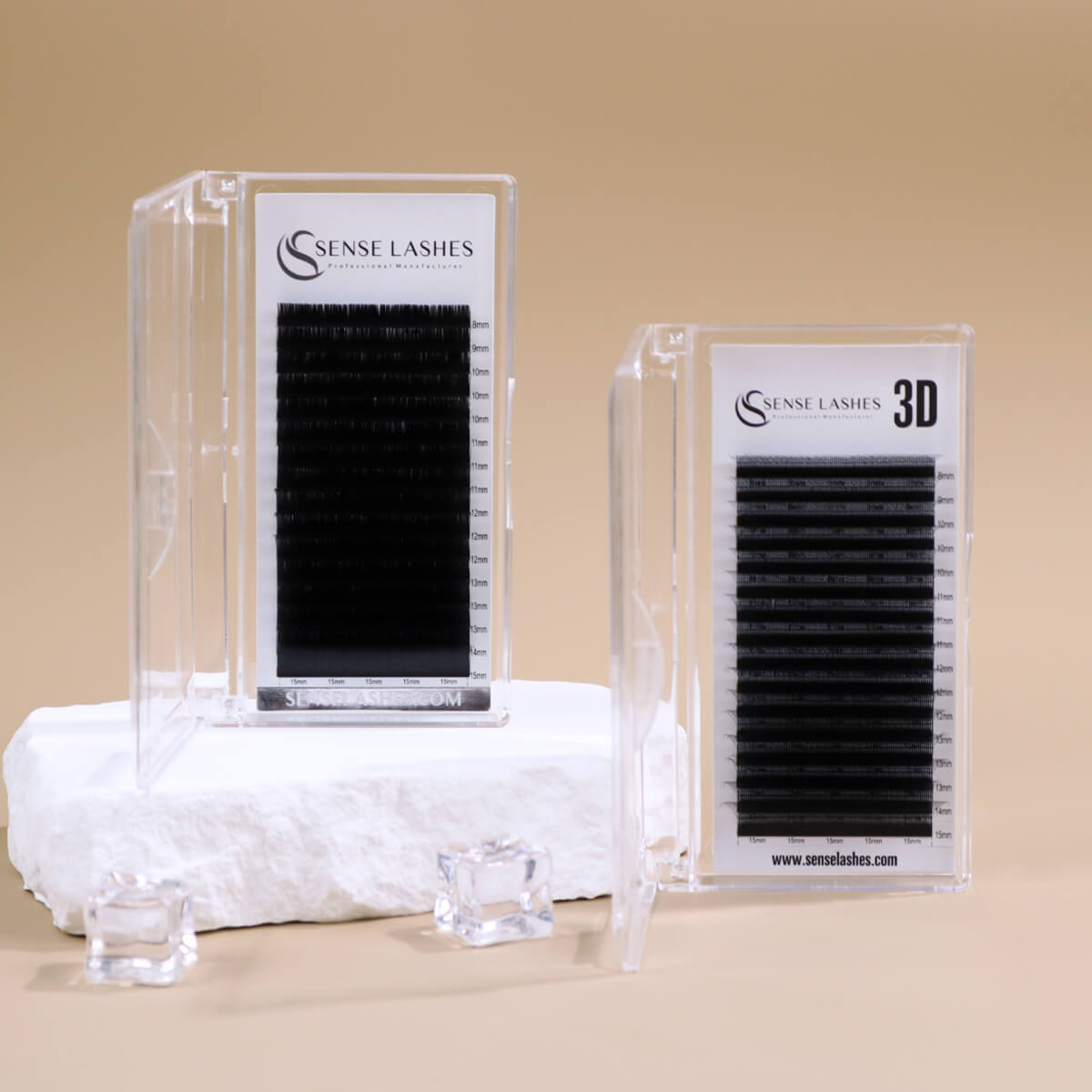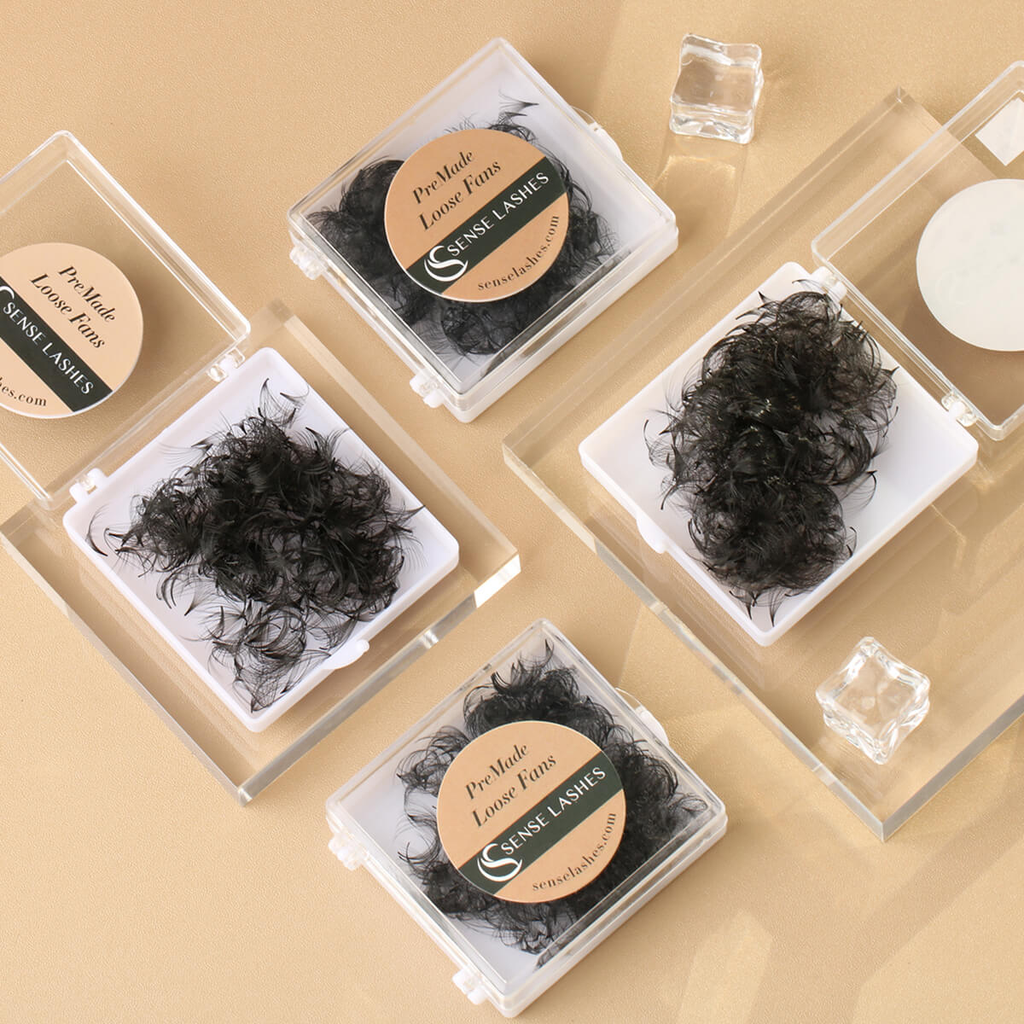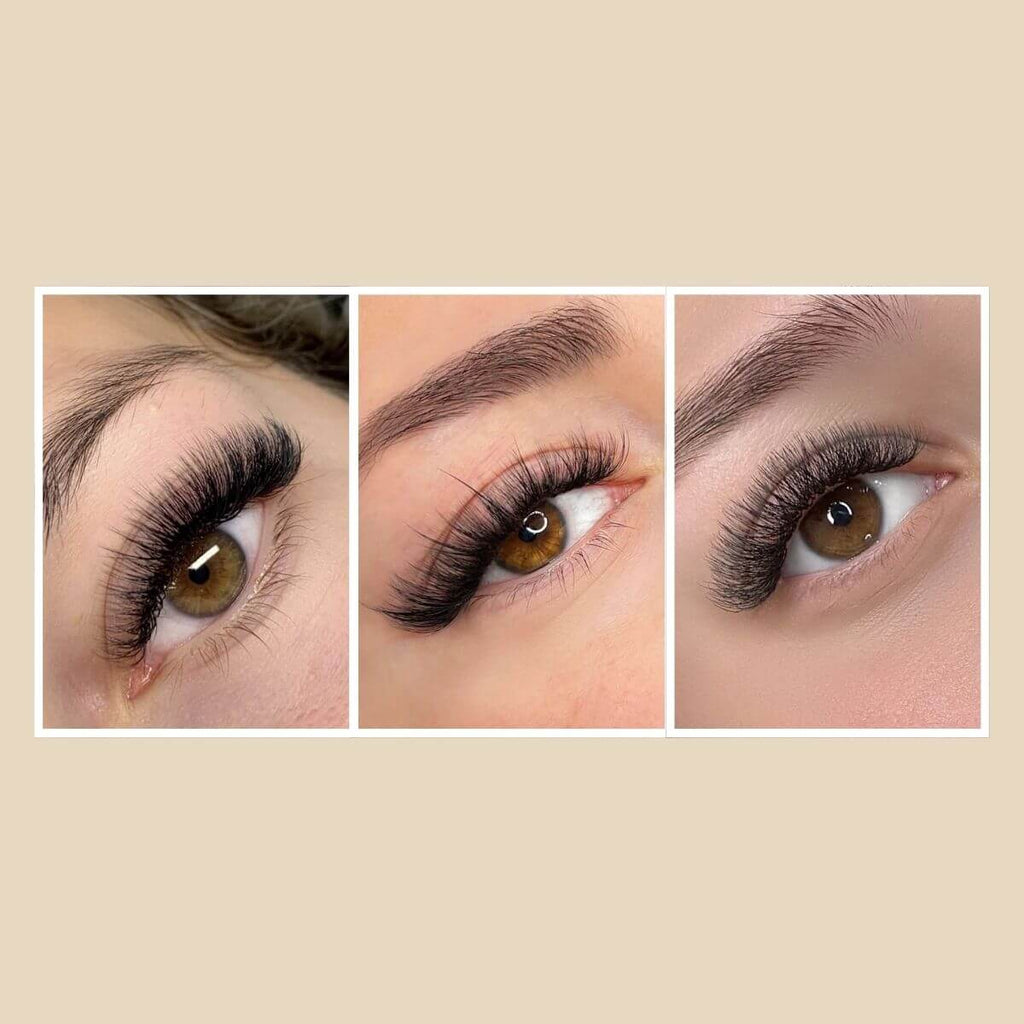Lash Extension Mapping: The Complete Playbook
Using the same lash map on everyone? You're missing out on creating those jaw-dropping results that keep clients coming back. The secret isn't just perfect technique - it's matching your mapping to each client's eye shape, and most artists never learn this. Once you start customizing for small eyes, downturned eyes, hooded lids, and more, your work will go from good to absolutely stunning.
What Is Lash Extension Mapping—and Why Eye Shape Comes First?

Before you reach for trays and tweezers, decide what the eyes should do: open, elongate, or lift. Mapping is the blueprint that turns that goal into exact lengths, curls, and density from inner to outer corner.
Lash extension mapping plans where lengths, curls, and densities go along the lash line. When you map by eye shape first, you control what clients notice most in a mirror: how open their eyes look, how lifted the corners feel, and how seamless the transitions appear.
| Goal | Eye Feature to Watch | Map Type | Curl Range | Length Range | Density Notes |
| Open the eye | Limited lid show, small eyes | Doll / Kitten | CC–D | Center 10–13 mm | Medium volume, light inner |
| Elongate | Round or protruding | Cat / Kitten | B–C | Outer 11–14 mm | Medium density, horizontal lay |
| Lift corners | Downturned outer third | Cat variant with early taper | C–D at droop point | Outer tapered 9–11 mm | Shorten the last few lashes |
| Comfort first | Hooded or deep-set | Balanced lines | B–C | 8–11 mm overall | Light volume, lower attachment |
| Pull inward | Wide-set | Doll / Reverse Cat | C–D center | Center 11–13 mm | Keep outer conservative |
| Create space | Close-set | Cat / Kitten | B–C | Gradual outer build | Slight outer extension |
If you get the goal and the blueprint right up front, nearly every other decision becomes easier and your set settles better in daily life.

Quick 30-Second Eye Assessment (Upright Only)
The fastest way to avoid remakes is a clean read of the eyes before you lie the client back. Thirty seconds is enough if you know what to look for. Assess with the client upright; shape and hooding can shift when reclined.
Shape + Corner + Lid Space Checklist
- Overall shape: round, almond, or narrow.
- Outer corner: up, level, or down.
- Lid show: how much mobile lid is visible straight ahead.
Brow Bone and Orbital Depth: Why It Matters
Prominent brow bones or deep-set eyes reduce clearance, pushing you toward softer curls (B/C) and shorter max lengths.
Photos and Notes to Save for Refills
Capture straight-ahead, relaxed closed-eye, and side profiles. Note curl, longest zone, any limits (e.g., “outer max 10 mm; stop two lashes early”).
A quick upright read plus three photos gives you everything you need to pick a safe curl, set max lengths, and adjust with confidence at fills.
Lash Curls, Diameters, and Lengths—Your Mapping Toolkit
Most retention or comfort problems trace back to the toolkit choices, not the application. Pick curls and lengths for clearance first, drama second.
Curl Cheat Sheet (When and Why)
| Curl | What It Does | Use It When | Watch Outs |
| B | Soft lift, natural | Deep-set, hooded, mature lids | May look too flat on very straight naturals |
| C | Balanced lift | Most eye shapes | Reliable comfort default |
| CC | Extra lift | Small eyes needing openness | Re-check center clearance |
| D | Strong lift | Clear lids, center-open looks | Often pokes on hooded lids |
| L | Flat base + lift | Monolids, straight/downward naturals | Angle carefully; test first |
| M | More vertical than L | Monolids needing lift without poke | Keep lengths moderate |
Length Progression Rules
Use 1–2 mm steps between zones, set max length by clearance, and keep inner corners short for comfort and frame.
Density and Fans
Classic for definition, hybrid for soft fullness, light volume for daily wear, and mega only with strict weight control.
When in doubt, choose the curl that clears the lid and the shortest length that achieves the goal—your sets will feel better and last longer.
Mapping by Eye Shape (With Ready-to-Use Frameworks)
Eye shape decides the map. Use these frameworks as a starting point, then tailor lengths and curls to the client’s clearance and natural lash health.
Small Eyes — Open and Round Without Overwhelm
- Goal: Larger-looking eyes without heavy weight.
- Best maps: Doll or Kitten.
- Curls: CC–D if safe; C if clearance is tight.
- Lengths: Center 10–13 mm; inner 7–9 mm; outer 9–11 mm.
- Notes: Longest just inside center; shorten the last few outer lashes.
- Pitfalls: 14–15 mm centers and heavy volume hide the lid and feel top-heavy.
Round or Protruding Eyes — Elongate Horizontally
- Goal: Softer almond profile.
- Maps: Cat or soft Kitten.
- Curls: B–C.
- Lengths: Inner 7–9 mm to outer 12–14 mm; taper the last 2–3 lashes.
- Notes: Lay fans more horizontally in the outer third.
- Pitfalls: D curl across the set can look bulgy.
Almond Eyes — Balanced With Styled Accents
- Goal: Keep harmony, add subtle character.
- Maps: Subtle Cat or soft Doll.
- Curls: C–CC; D only with strong clearance.
- Lengths: Long zone center or outer depending on the look; 11–13 mm typical.
- Notes: Decide with client: a touch more lift or a touch more length.
- Pitfalls: Sharp length jumps that fight the natural shape.
Downturned Eyes — Lift, Then Stop Before the Drop
- Goal: Counter the downward tilt.
- Maps: Cat variant with early taper.
- Curls: C overall; brief D at the droop point if safe.
- Lengths: Build to the droop, then drop 1–2 mm and stop early.
- Notes: Identify the droop start (often two-thirds across).
- Pitfalls: Extending past the natural corner pulls the eye down.
Hooded or Deep-Set Eyes — Comfort First, Always
- Goal: No poke, clean wear, flattering line.
- Maps: Balanced lines with gentle center open.
- Curls: B–C; avoid D.
- Lengths: 8–11 mm common; test upright.
- Notes: Attach slightly lower; keep weight light; check with eyes open.
- Pitfalls: Strong curls that roll back to the lid; heavy outer thirds.
Monolid Eyes — Flat Plane, Strategic Lift
- Goal: Lift without fighting anatomy.
- Maps: Soft Doll or balanced Cat.
- Curls: L/M where a flat base helps; blend C/CC elsewhere.
- Lengths: 9–12 mm with smooth transitions.
- Notes: Angle L/M to sit flush; swap to C/CC if tips feel too vertical.
- Pitfalls: Long D curls that press the skin and twist.
Close-Set Eyes — Create Breathing Room
- Goal: Pull focus outward.
- Maps: Cat or Kitten with short inner.
- Curls: B–C.
- Lengths: Inner 7–8 mm, build to 12–13 mm outer; slight extension beyond natural line is fine.
- Notes: Keep inner third neat and light.
- Pitfalls: Long center lengths that crowd the bridge.
Wide-Set Eyes — Pull Attention Inward
- Goal: Shift focus toward center.
- Maps: Doll or Reverse Cat.
- Curls: C–D center; C outer.
- Lengths: Center 11–13 mm; outer 9–10 mm.
- Notes: Boost volume at inner-mid, keep outer conservative.
- Pitfalls: Traditional Cat maps push eyes farther apart.
Start with these bands, then refine on fills based on how the set wears in the client’s real routine—commutes, workouts, and sleep habits will teach you what to tweak.
Special Cases Most Maps Miss
A few scenarios need extra care. These adjustments prevent discomfort and keep shape intact between fills.
- Mature Eyes and Lax Skin: Use B/C curls, lighter weight, shorter outer lengths, and lower attachments for stability; avoid big length jumps.
- Glasses Wearers (Fit and Clearance): Aim for 6–11 mm, consider CC/D to lift away from lenses, and test with frames on before finishing.
- Very Straight or Downward Natural Lashes: Pre-lift with a curler or use L/M; keep lengths moderate so tips don’t angle down.
- Sparse or Damaged Naturals: Thinner diameters, light volume, conservative lengths, and shorter refill cycles protect health and retention.
These tweaks are small, but they prevent the exact issues that lead to early wear, irritation, or shape collapse.
Cat Eye vs Doll Eye vs Kitten vs Reverse Cat—Which Map When?
Most requests fit one of four patterns. Choose by the client’s goal and corner behavior, not by trend.
Side-by-Side Comparison
| Map | Visual Goal | Best For | Risk | Quick Notes |
| Cat | Elongation | Round/protruding, close-set | Heavy tail can droop | Build to outer third, taper the last few |
| Kitten | Soft elongation | Most eye shapes | May be too subtle for “dramatic” requests | Everyday, low-risk version of Cat |
| Doll | Center open | Small eyes, wide-set | Can crowd close-set | Longest near center, keep outer modest |
| Reverse Cat | Pull inward | Wide-set | Looks odd if overdone | Longer inner-mid, short outer third |
One-Minute Decision Flow
- Wants bigger eyes → Doll/Kitten with CC–D if safe.
- Wants longer eyes → Cat/Kitten with B–C.
- Outer corner drops → Cat with early taper; D briefly at droop, then shorten.
- Eyes far apart → Doll/Reverse Cat; boost inner-mid, restrain outer.
If you can explain this logic in simple terms during the consult, clients feel heard and say “yes” faster.
Placement and Transition Rules That Make Sets Look “Expensive”
The map is the plan; placement is the finish. Clean transitions and a controlled tail make a set look premium even at everyday lengths.
Seamless Length Transitions
Use 1–2 mm steps and add bridge lengths where a seam looks obvious. Shorten the last two or three lashes at each boundary to hide the transition.
Weight and Direction: Where Fans Should Point
Aim direction to match the goal: slightly up for lift, slightly horizontal for elongation. Keep inner corners neat and light for comfort.
Outer Corner Management
Stop a lash or two before the very end or shorten those last few by 1–2 mm. This small change keeps the eye line crisp and lifted.
When placement supports the map, the set looks intentional from every angle and stays flattering as it grows out.
Mini Case Studies (Notes You Can Copy)
These quick notes show how the frameworks work on real clients and what to adjust.
“Small → Wider” (Center Emphasis)
Kitten map; inner 7–8–9 mm, center 11–12–12 mm, outer 11–10 mm; CC curl, light-to-medium volume. Result: open eyes, no top heaviness.
“Round → Almond” (Outer Elongation)
Cat map; inner 7–8 mm, mid 9–10–11 mm, outer 12–13 mm, last two back to 11–10 mm; C curl. Result: softer almond look, tidy profile.
“Downturned → Lifted” (Mapped Droop Point)
Build to 11–12 mm at the droop; D curl briefly at droop; taper to 9–10 mm; stop early. Result: lifted edge without a heavy tail.
Log these settings in the client’s file. Small, documented changes turn good first sets into great long-term results.
FAQs: Lash Mapping and Eye Shapes
Q1. What is the best lash map for hooded eyes?
Use B or C curls, keep most lengths 8–11 mm, attach slightly lower on the natural lash, and check with eyes open after each section. Avoid D curl since it often rolls back and touches the lid.
Q2. Cat eye vs. doll eye—how do I choose for my client’s face?
Pick by effect, not trend. Doll opens the eye (great for small or wide-set eyes). Cat elongates (good for round or close-set eyes). If the outer corner turns down, use Cat with an early taper and shorten the last few lashes.
Q3. How do I map for clients who wear glasses?
Keep lengths around 6–11 mm and consider CC/D to lift away from lenses. Always test with glasses on before finishing the outer third and shorten anything that brushes the frame.
Clear, practical answers build trust—and they make it easier to suggest the map that truly fits the client’s lifestyle.
Final Notes
Map for the eye in front of you, not the trend on social media. Start with a clear goal—open, elongate, or lift—then pick curl and length bands that protect comfort and clearance. Smooth transitions and a tidy outer corner do more for the final look than any dramatic spike. Keep clear notes, adjust at refills, and your sets will stay consistent week after week.





Deixe um comentário